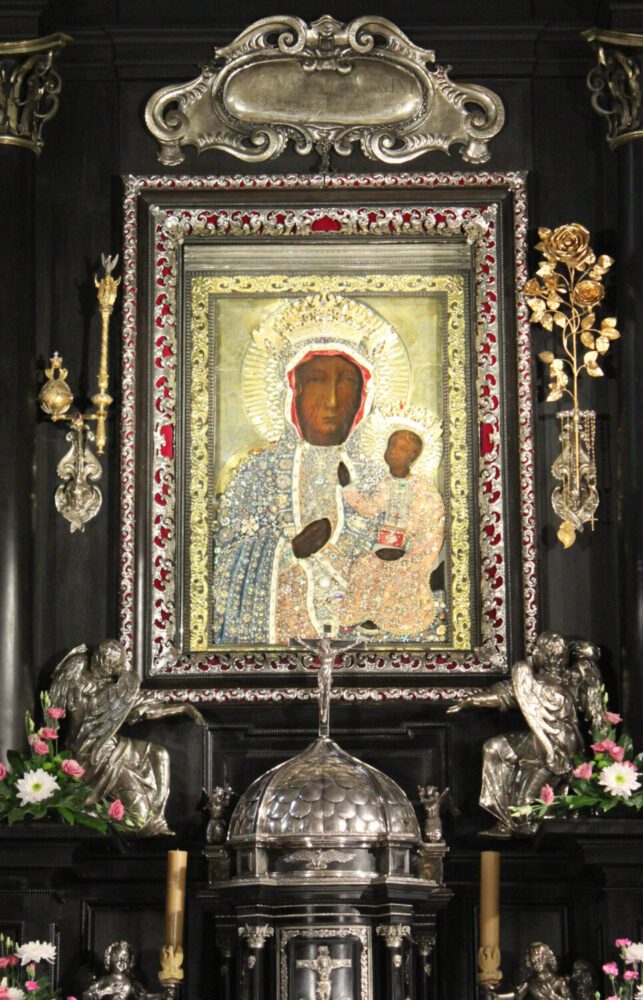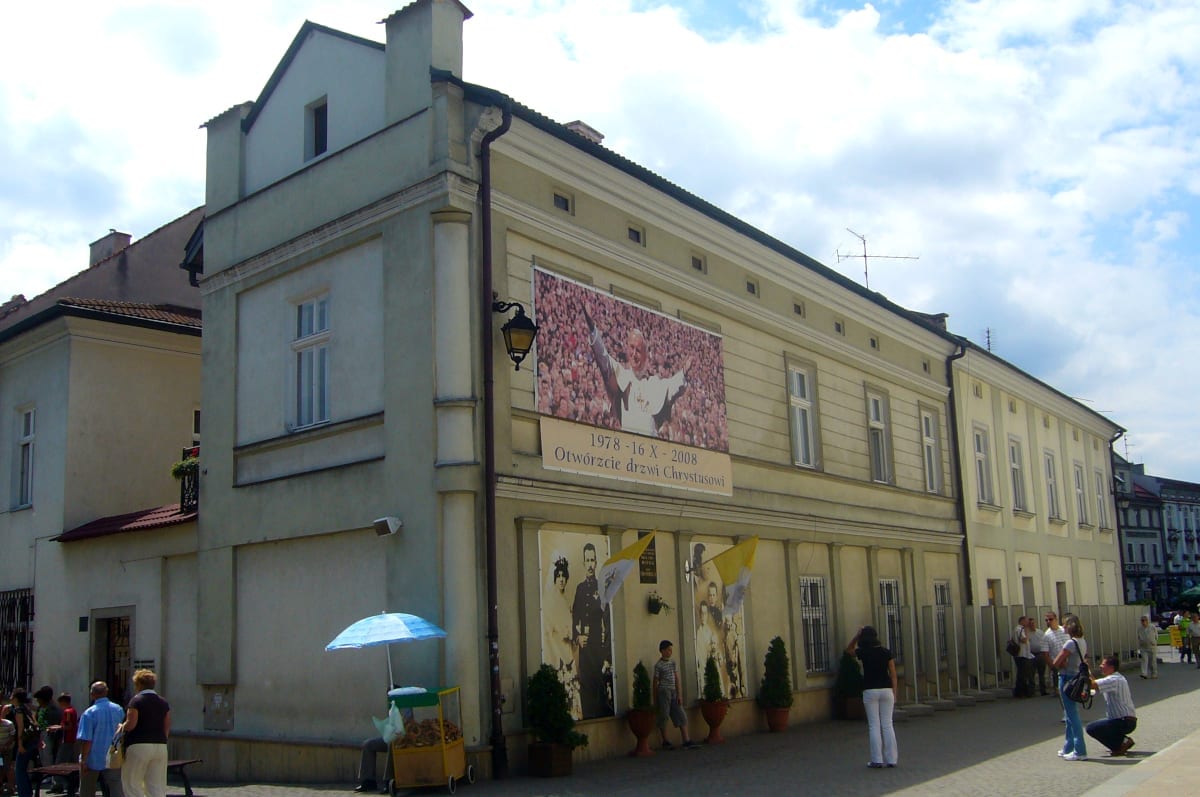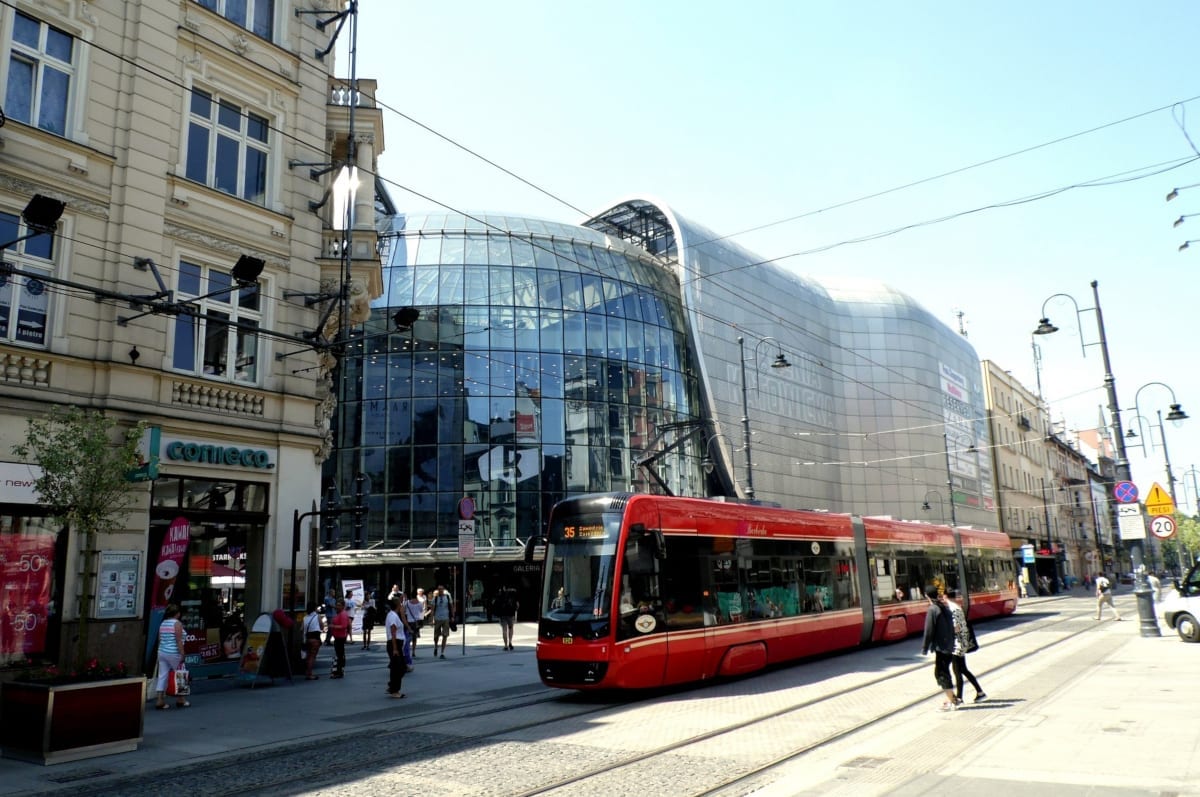Jasna Góra Monastery
Jasna Góra
Jasna Góra – updated 12 January 2023.
The Jasna Góra Monastery is located in Poland’s spiritual capital, the city of Częstochowa, within the Silesian Voivodeship in southern Poland. It is a pilgrimage site for Catholics and is home to the famous icon of the Black Madonna, which is considered to be one of the most important religious artifacts in Poland.
Bright Hill
Jasna Góra is a shrine dedicated to the Virgin Mary and was founded in 1382 by Pauline monks. The Paulite order named the hill in the western part of the city ‘Jasna Góra’ (Bright Hill) and erected the monastery, which has been a pilgrimage destination since the Middle Ages. It was a place of refuge during times of war, and it was also the site of several battles.
The Black Madonna
The icon of the Black Madonna, also known as the “Our Lady of Częstochowa,” is believed to be a Byzantine icon dating back to the 14th century. The icon is housed in the monastery's main church, the Church of the Assumption of the Blessed Virgin Mary, which is open to the public for viewing.
The image of the Black Madonna of Częstochowa, also known as Our Lady of Częstochowa, to which miraculous powers are attributed, is one of Jasna Góra's most precious treasures.

4 million pilgrims
Each year, thousands of believers are drawn to the site to see the Black Madonna painting in the Chapel of Our Lady and to look around the monastery. It is estimated that over 4 million pilgrims visit the shrine every year from as many as 80 different countries. Many Polish pilgrims travel there by foot with the average distance for a pilgrim group to travel being around 350 km over an 11-day period. Pilgrims usually plan their journeys so that they arrive in Jasna Góra in time for the Assumption of Mary.
The Chapel of Our Lady
The Chapel of Our Lady is the oldest part of the monastery, and this is where the Black Madonna can be viewed. The picture is unveiled from 6am to noon and from 1.30pm until 9.20pm. During weekends times are 6am to 1pm and 2pm until 9.20pm.
Pontiffs
Several Pontiffs have recognised the venerated icon, beginning with Pope Clement XI who issued a Canonical Coronation to the image on 8 September 1717 via the Vatican Chapter. Pope John Paul II, a native son of Poland, prayed before the Madonna during his historic visit in 1979, several months after his election to the Chair of Peter. The Pope made another visit to Our Lady of Czestochowa in 1983 and again in 1991.
The legend
The legend concerning the two scars on the Black Madonna’s right cheek is that the Hussites stormed the Pauline monastery in 1430, plundering the sanctuary. Among the items stolen was the icon. After putting it in their wagon, the Hussites tried to get away, but their horses refused to move. They threw the portrait down to the ground and one of the plunderers drew his sword upon the image and inflicted two deep strikes. When the robber tried to inflict a third strike, he fell to the ground and writhed in agony until his death. Despite past attempts to repair these scars, they had difficulty in covering up those slashes as the painting was done with tempera infused with diluted wax.
There’s a lot more to Jasna Góra than the Black Madonna such as the 17th century basilica with its opulent baroque furnishings, the 106m tall bell tower, an arsenal with an impressive collection of Turkish weapons from the 1683 Battle of Vienna and a museum.
Museum
You’ll find some very interesting artefacts in the museum such as the founding documents of Jasna Góra from 1382 and a cross made from steel from the rubble of the World Trade Center.
The museum houses an impressive collection of religious artifacts, including paintings, sculptures, and other works of art. It also has a gift shop, a restaurant, and accommodation for pilgrims.
Lech Wałęsa
Among the monastery's most important exhibits is the medal from the 1983 Nobel Peace Prize received by Lech Wałęsa, the former Polish president and trade-union organizer and rosaries made from breadcrumbs by concentration camp prisoners.
Etiquette
There are typically numerous pilgrims and tourists at Jasna Góra Monastery, and the volume of excited voices can be high. However, upon entering the Monastery, it is expected etiquette for visitors to be silent or as quiet as possible out of respect. Often, there is a long line of people who wait to approach the shrine of the Black Madonna of Częstochowa. Upon arriving at the place of the shrine at which one would pass in front of the icon of Our Lady, it is expected and a sign of respect for pilgrims to drop to their knees and traverse the anterior of the shrine on their knees.
The Monastery is open to visitors all year round and it's a place of pilgrimage, so visitors should be aware of the dress code, which requires modest dress and head covering for women.
FAQ
- What is the significance of the Jasna Góra Monastery?
- The Jasna Góra Monastery is one of the most important religious destinations in Poland and a pilgrimage site for Catholics. It is home to the famous icon of the Black Madonna, which is considered to be one of the most important religious artifacts in Poland.
- How old is the Jasna Góra Monastery?
- The Jasna Góra Monastery was founded in the 14th century.
- What can I see at the Jasna Góra Monastery?
- Visitors can see the famous icon of the Black Madonna, which is housed in the monastery's main church, the Church of the Assumption of the Blessed Virgin Mary. The monastery also has a museum that houses an impressive collection of religious artifacts, including paintings, sculptures, and other works of art.
- Are there any restrictions on visiting the Jasna Góra Monastery?
- There is a dress code which requires modest dress and head covering for women. Visitors should also be aware that the Monastery is a place of pilgrimage, so it is expected to be quiet and respectful.
- Are there any guided tours available at the Jasna Góra Monastery?
- Yes, guided tours are available at the Jasna Góra Monastery. Visitors can ask for the tour in the information point or see below.
- Can I stay overnight at the Jasna Góra Monastery?
- Yes, the Monastery has accommodation for pilgrims, including single, double and multi-bed rooms, and dormitories.
- Are there any other facilities at the Jasna Góra Monastery?
- The Monastery has a restaurant, a gift shop, and a parking lot for visitors.
Religious Tours

What to expect from this tour
This fascinating tour with a religious context will start from the pick-up from your accommodation in Krakow. At first, you will go to Wadowice, the hometown of The Holy Father John Paul II. Follow in the footsteps of one of the greatest Poles in history.
You will see the secondary school which young Karol Wojtyła attended. Then you will go to the Main Market Square named after John Paul II and visit the parish church. You will admire numerous paintings, chapels and famous baptismal font where future Pope had been baptized. Finally, you will participate in a guided tour at the Family Home Museum of John Paul II available in various languages.
From Wadowice you will go directly to Częstochowa often called the spiritual capital of Poland. Marvel the beauty and mystical atmosphere of Jasna Góra, the famous Polish shrine to the Virgin Mary and one of Poland’s most visited pilgrimage sites. Upon arrival enjoy your time having a lunch break at your own expense. Start your tour at The Monastery guided by venerable Pauline’s Monk. In the end, you will admire the miraculous painting of The Black Madonna of Częstochowa.

